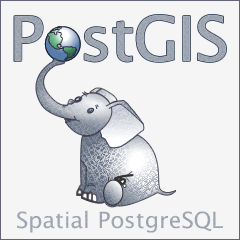That new project using GeoDjango and PostGIS
I've started putting some time again this weekend on the project that I was talking about last week.
To tell the truth, I had previously made this particular project work. In vague terms (I'll be less vague when I get something solid down), I was taking some huge sets of data from one particular national agency and making it meaningful on a geographic support, namely Google Earth. I did it, but it was terribly inefficient (what about loading thousands of points on the same map?) and unreadable (what if those points were all focused in urban areas?).
The next step was to use a less custom approach, with a web framework named Django, and its GIS libraries bundled into what's called GeoDjango. This framework can possibly use flat files as backend, but to store geographical data, the best choice is PostGreSQL and its extension PostGIS that adds the ability to store geographical data, as well as make operations of the kind of "select these points within a certain perimeter".
This is the neat part that I didn't have in my original project with a plain MySQL database backend. MySQL also has spatial extensions but does not support nearly as many spatial lookup types as PostGIS.
Now that I have my data in a database, I'm looking forward to play with the presentation part. It'll also be interesting to work on making this a compelling user experience.

Leave a comment